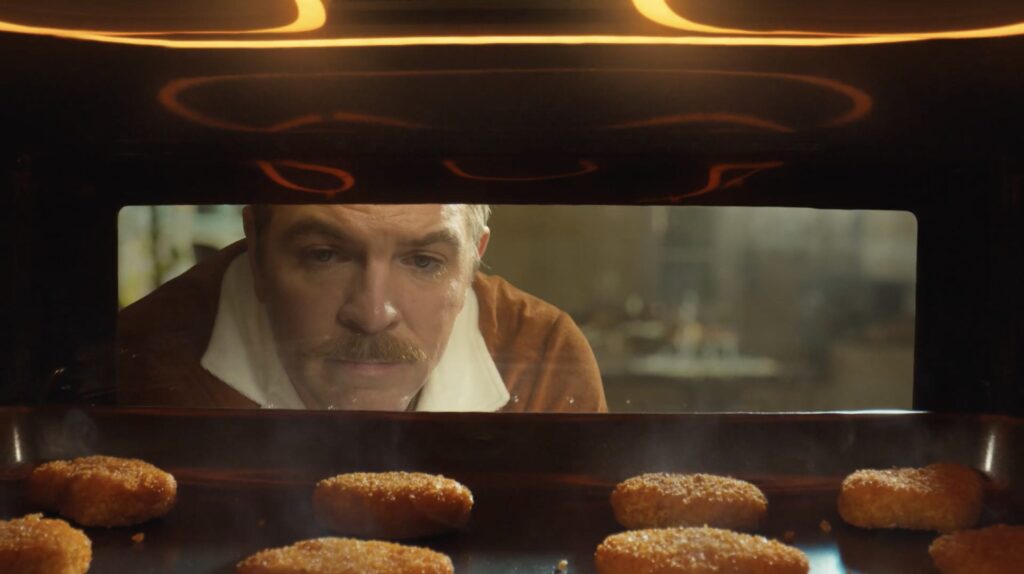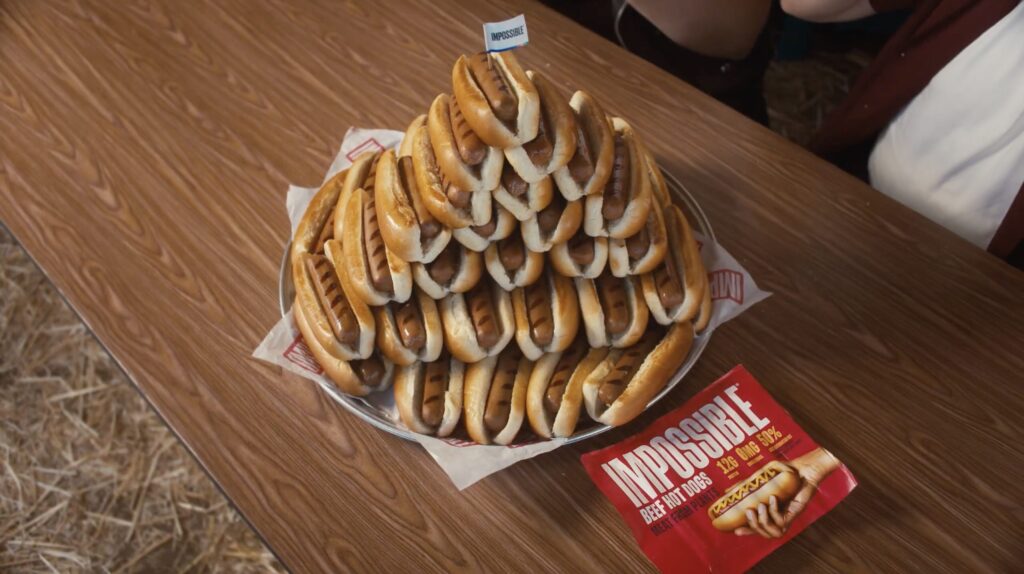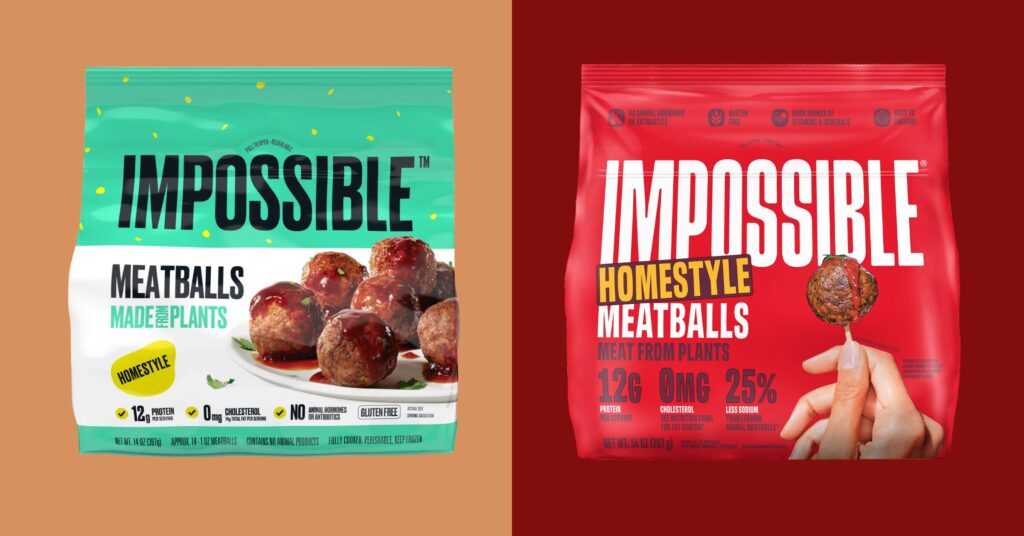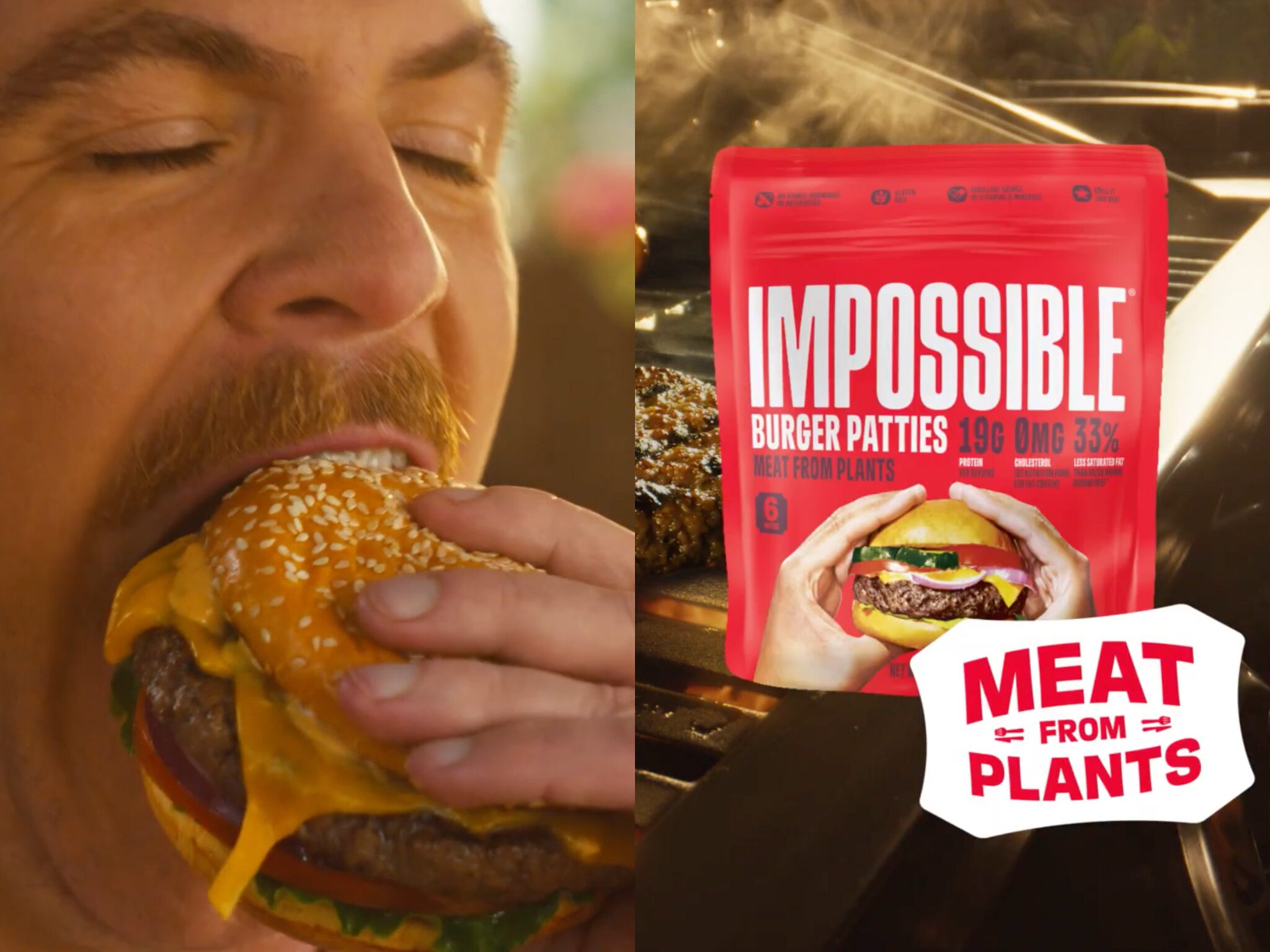Impossible Foods Debuts First Marketing Campaign Since Rebrand at Met Gala
5 Mins Read
Geared towards meat-eaters, Impossible Foods’ first ad campaign since its rebrand is all about flavour and health – the two things Americans care most about in their food.
A hot-dog-eating contest, lusting over nuggets, and an overly long sub are all featured in Impossible Foods’ first marketing campaign after refreshing its brand identity in March, with the plant-based meat pioneer declaring: “We’re solving the meat problem with more meat.”
The new campaign debuted at last night’s Met Gala red carpet show, which over-indexes on Impossible Foods customers, according to the company. At the garden-themed event, the celebrity attendees got to sample Impossible sliders with brie and truffle aioli, and passionfruit BBQ Impossible chicken nuggets.
The hero 30-second ad is a fast-paced walk-and-talk spot, with the protagonist outlining how “meat has problems”, and to solve them, we should eat more of it – only caveat? It should be made from plants. Describing the meat problem on its website, the brand notes how it’s “too delicious”, but that we eat so much of it, it’s causing problems – for our bodies as well as the planet.
“We see this campaign as a way to let meat eaters know Impossible meat is the best way to keep eating meat you love, just without a lot of the problems associated with animal meat,” said chief marketing and creative officer Leslie Sims. “Whether you’re a vegan, hardcore meat eater or somewhere in between, we have you covered.”
Changing how we see meat

The months-long campaign – which will run on TV and streaming, and digital, social media and billboards – was conceived via a collaboration between Impossible Foods’ in-house creative team and three-time AdAge Small Agency of the Year winner Erich and Kallman.
It features a distinct Americana feel designed to feel familiar and relatable to meat-eaters, with cultural traditions like a backyard barbecue, hot-dog-eating contest and a burger joint referenced ahead of grilling season. One scene also depicts a family-style meal with a giant bowl of spaghetti and Impossible meatballs.
The 30-second spot is accompanied by 15-second ads each spotlighting a different product – beef, chicken or pork – in a tongue-in-cheek tone, which follows the brand’s Making Meat History campaign from 2023. The latter compared an Impossible burger with a conventional one, which resonated with meat-eaters, leading the company to realise it could hone in even more on the similarities between old meat and new meat.

This is why there’s a call to action directed to meat-loving Americans – who eat way more meat than is recommended or needed – with Impossible Foods imploring them to solve the meat problem with more burgers, hot dogs and meatballs. The idea is to reframe meat as a delicious food made from plants, instead of forcing meat-eaters to change their lifestyles.
“For this latest campaign, we wanted to have a clear value proposition for them – you love meat, so why not try us and be better for the planet?” Sims told AdAge. On the humorous tone of the ads, she explained: “We are talking to hard-core meat-eaters, but we don’t want to be preachy.”
Taste and health over environmental messaging
With the new marketing campaign, Impossible Foods is doubling down on its food- and health-forward messaging, with the focus very much on flavour and nutrition. For example, one of the hero commercial’s scenes urges consumers to “punch cholesterol in the face”, highlighting how its meats have zero cholesterol.
The environmental emphasis is no longer a centrepiece in the ads, which was expected after the brand’s refresh put taste and health at the heart of its packaging. Speaking to Reuters last month, Impossible Foods CEO Peter McGuinness outlined why the brand has taken this direction: “We’re not leading with the planet because not enough people care. It’s the reality now.”

And he’s right – the environmental pull of plant-based eating isn’t as strong as it used to be. One 2023 survey found that the top two attributes discouraging Americans from trying plant-based meat are flavour (48%) and nutrition (35%). Another poll revealed that health is the major reason Americans eat vegan or vegetarian diets, with six in 10 choosing it.
It’s why the brand launched a Beef Lite version of its mince, which is approved as heart-healthy by the American Heart Association. But a company spokesperson told Green Queen in December that taste is the main reason behind consumers deciding to purchase a product again or not”.
The shift was most visible in the rebrand two months ago, which saw the company switch from teal green to red packaging with a larger imagery, and a higher focus on taste descriptors, saturated fat and sodium. The colour change was designed to reinforce the meatiness of its products and their likeness to conventional counterparts. Red is a colour more naturally associated with meat, as opposed to green, which is the symbol of eco-friendliness and vegan food. At the time, Impossible Foods laid out its aim to appeal to the “carnivorous cravings of meat-eaters”.
“Our intent with the new packaging – and the overall design of our new brand identity – is to lean into the craveability of meat,” a representative told Green Queen. “Taste is, of course, a big part of this. Between the bold red aesthetic and new food photography highlighted on the front of each product, we’re deliberately putting the deliciousness of our meat from plants front and centre.”

And consumer testing shows they do love its products – the brand says 80% of people who try its burgers like them, and that taste-testers preferred its chicken nuggets three-to-one in a head-to-head comparison with conventional nuggets.
The marketing campaign comes amid a flurry of activity for Impossible Foods. It has been rolling out its new beef hot dogs at baseball stadiums across the US, serving its meat to the US army, transitioning a cattle ranch into a farm that produces plant-based meat ingredients, and – more long term – weighing up a liquidity event that could include a sale or an IPO, all while entering into Whole Foods nationwide and rejigging how it sells its meat. It’s a busy time for Impossible Foods, and one it will hope translates into success.



